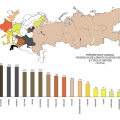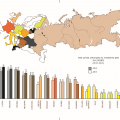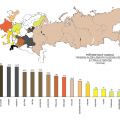Publications
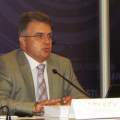
EUROPEAN XENOPHOBIA AND RADICALISM (2016)
The problem of Xenophobia and Radicalism remains for a number of years one of the main problems in the so-called "Greater Europe." What has changed over the past year?
Analysis is given on the basis of 8 EU countries (France, Germany, Greece, Hungary, Italy, the Netherlands, Poland and the United Kingdom), as well as Russia and Ukraine, as countries who play a significant role in political and economic processes in Europe.

What is the basis of European Xenophobic Radicalism?
It is commonly believed that the main reason is the presence of entrenched xenophobic traditions of the majority and minority, inadequate legislation on minorities and the increase in migration flows from Asia and Africa, which creates the demand for extreme right policies from the indigenous populations. However, migration from Third World countries into Europe has been present since the 1950s.
In addition, radical Islamists very often are originally second or third generation immigrants, born in Europe and fluent in the language of the country they live in. Therefore, it is fair to say that the cause is more fundamental – in their self-determination and the readiness of minorities to respect the traditions of the majority and vice versa. Does this mean that traditions and legislation play the main role in this issue? Not necessarily. There is a whole range of influencing factors, including the type of integration model implemented by a country.

"The Transnational Far Right"
The transnational far right is currently flourishing. The unexpected election of the racist, nationalist and isolationist Donald Trump as president of the United States has galvanised far right groups across the world. In Europe, the rise of Trump combined with an increase in Jihadi Islamist terrorism and an influx of refugees escaping Middle Eastern war has led to a resurgence of far right activity. Politically, the far right has become mainstream in many countries, for example France, Germany and Austria, and far right themes (racism, xenophobia, anti-liberalism, nationalism and social conservativism, amongst others) are gaining traction with the European electorates at an alarming rate. Beyond the confines of the nation-state, moreover far right movements are also scoring victories and mobilising activists, as this report will emphasise.
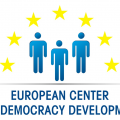
"XENOPHOBIA, DISCRIMINATION AND AGGRESSIVE NATIONALISM IN EUROPE" (January 2014 – June 2015)
This present article aims to analyse the most prominent manifestations of hatred in countries of the so-called “Greater Europe”, i.e. the Council of Europe member-states and countries located within European geographical borders. The primary objective is to identify factors that influence the demand for radicalism and those that contribute to the reduction of radical sentiments in society.

Xenophobia and Radicalism in Russia, 2015
The situation with hate crime in Russia remains twofold. On the one hand, Russia has a sufficiently developed legislation protecting minority rights, combatting xenophobia, etc. Public officials on all levels are actively speaking against xenophobia. The new Federal Agency on Nationalities Affairs is designed to focus on ensuring interethnic harmony in the country. The government continuously provides grants to relevant NPOs. In 2015, a significant decrease in hate crime was observed. This trend is most likely caused by two factors – activity of the law enforcement and the focus of local nationalists on the conflict in Ukraine. On the other hand, there are some issues in law enforcement practices, specifically discrimination of minorities – immigrants, members of “sects” and LGBT.

